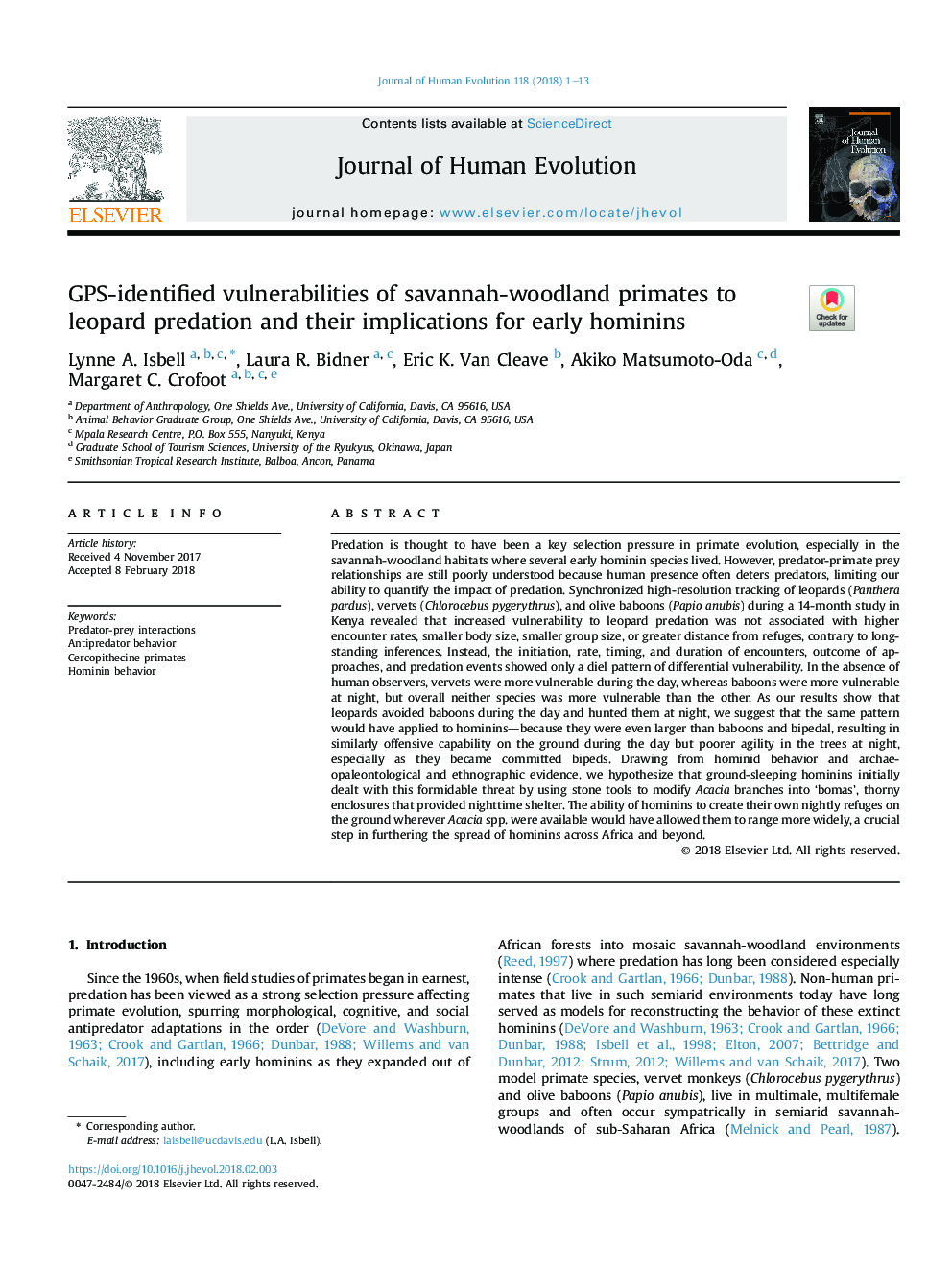| کد مقاله | کد نشریه | سال انتشار | مقاله انگلیسی | نسخه تمام متن |
|---|---|---|---|---|
| 8887281 | 1628131 | 2018 | 13 صفحه PDF | دانلود رایگان |
عنوان انگلیسی مقاله ISI
GPS-identified vulnerabilities of savannah-woodland primates to leopard predation and their implications for early hominins
دانلود مقاله + سفارش ترجمه
دانلود مقاله ISI انگلیسی
رایگان برای ایرانیان
کلمات کلیدی
موضوعات مرتبط
علوم زیستی و بیوفناوری
علوم کشاورزی و بیولوژیک
بوم شناسی، تکامل، رفتار و سامانه شناسی
پیش نمایش صفحه اول مقاله

چکیده انگلیسی
Predation is thought to have been a key selection pressure in primate evolution, especially in the savannah-woodland habitats where several early hominin species lived. However, predator-primate prey relationships are still poorly understood because human presence often deters predators, limiting our ability to quantify the impact of predation. Synchronized high-resolution tracking of leopards (Panthera pardus), vervets (Chlorocebus pygerythrus), and olive baboons (Papio anubis) during a 14-month study in Kenya revealed that increased vulnerability to leopard predation was not associated with higher encounter rates, smaller body size, smaller group size, or greater distance from refuges, contrary to long-standing inferences. Instead, the initiation, rate, timing, and duration of encounters, outcome of approaches, and predation events showed only a diel pattern of differential vulnerability. In the absence of human observers, vervets were more vulnerable during the day, whereas baboons were more vulnerable at night, but overall neither species was more vulnerable than the other. As our results show that leopards avoided baboons during the day and hunted them at night, we suggest that the same pattern would have applied to hominins-because they were even larger than baboons and bipedal, resulting in similarly offensive capability on the ground during the day but poorer agility in the trees at night, especially as they became committed bipeds. Drawing from hominid behavior and archaeopaleontological and ethnographic evidence, we hypothesize that ground-sleeping hominins initially dealt with this formidable threat by using stone tools to modify Acacia branches into 'bomas', thorny enclosures that provided nighttime shelter. The ability of hominins to create their own nightly refuges on the ground wherever Acacia spp. were available would have allowed them to range more widely, a crucial step in furthering the spread of hominins across Africa and beyond.
ناشر
Database: Elsevier - ScienceDirect (ساینس دایرکت)
Journal: Journal of Human Evolution - Volume 118, May 2018, Pages 1-13
Journal: Journal of Human Evolution - Volume 118, May 2018, Pages 1-13
نویسندگان
Lynne A. Isbell, Laura R. Bidner, Eric K. Van Cleave, Akiko Matsumoto-Oda, Margaret C. Crofoot,